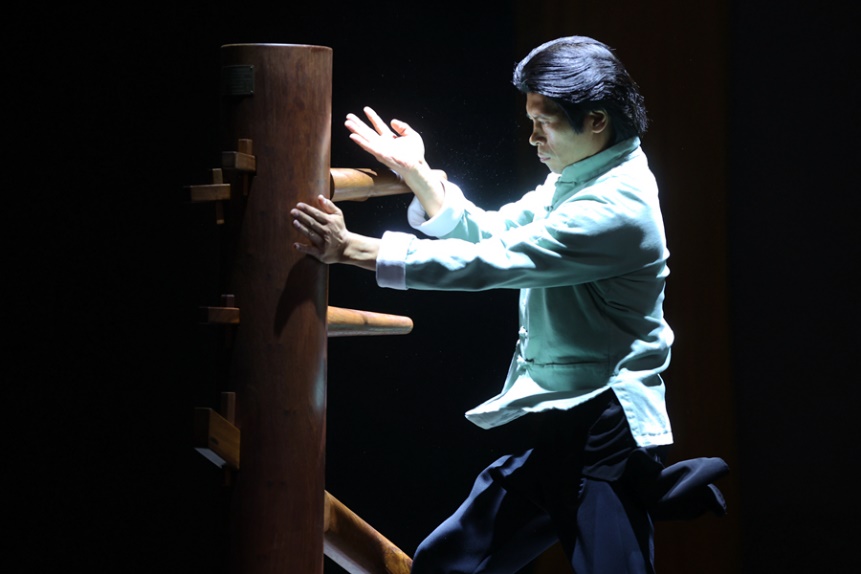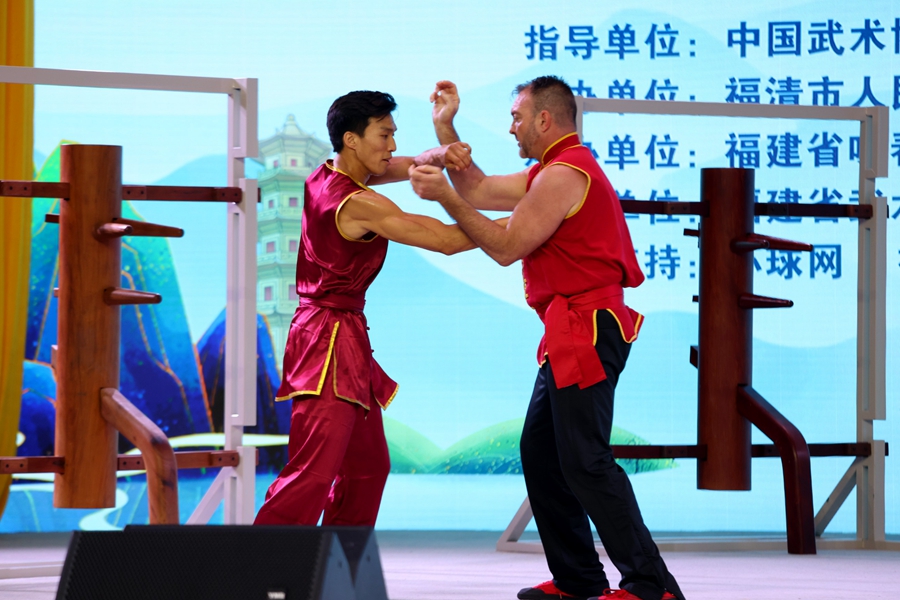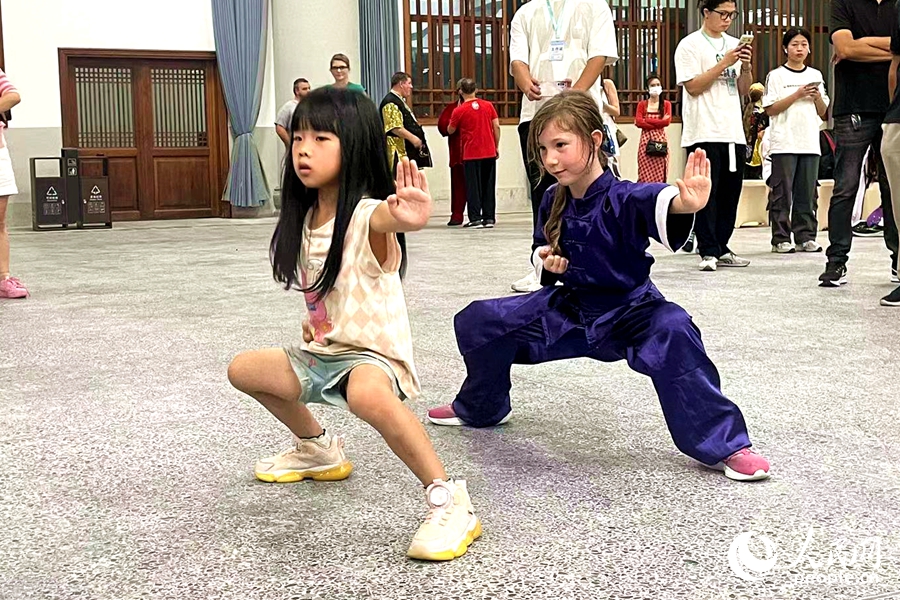Wing Chun shines amid inheritance, promotion efforts
The final of the First World South Shaolin Wing Chun Competition recently concluded in Fuqing city, a county-level city in Fuzhou, southeast China's Fujian Province. Nearly 1,000 Wing Chun practitioners took part in the event.
The First World South Shaolin Wing Chun Competition began in April 2024. After two rounds of competitions, 170 participants made it to the world finals. The registration and schedule of the competition showed a balanced number of enthusiasts in different age groups.

A man practices Wing Chun. (Photo courtesy of the organizer of the competition)
Over the course of more than four months, a total of 36 individuals emerged as champions, with approximately 15 hailing from the competition's overseas zone.
Wing Chun, a globally popular martial art practiced in over 70 countries, is a renowned symbol of Chinese Kung Fu.
More than 300 years ago, Zhu Hongmei, a descendant of the Ming royal family, fled to Fujian Province. Her experiences during her escape, witnessing the plight of refugees and the passionate spirit of national heroes, profoundly affected her. Inspired by a master from a temple in Fuzhou, Zhu practiced nearby, eventually becoming known as Master Ng Mui.
Zhu, who had learned martial arts since childhood, also studied Traditional Chinese Medicine under imperial physicians. After taking monastic vows, she used her medical skills to help many people and combined her understanding of Buddhism with martial arts to create the practical combat skill—Wing Chun.
Wing Chun was initially taught to female disciples. The female disciples, some of whom left their hometowns for work or marriage, spread the practice of Wing Chun far and wide, ensuring its legacy for generations to come.

Two men practice Wing Chun. (Photo courtesy of the organizer of the competition)
Wing Chun is known for its clever utilization of human body structure and basic principles of mechanics. By skillfully employing space and force, practitioners can generate power from borrowed strength, overcome stronger opponents with finesse, and exhibit characteristics such as speed, accuracy, and agility, said Zheng Zujie, an inheritor of Wing Chun.
In 2014, Wing Chun in Fujian was listed as a national-level intangible cultural heritage in China.

Beyond the competition arena, Wing Chun has become a universal language that transcends borders. (People's Daily Online/Lin Ying)
According to Zheng, each move and technique of Wing Chun embodies the profound understanding of strength, skill, wisdom, and courage passed down by the martial art's ancestors.
Wing Chun has become a bridge for communication, and various competitions provide a platform for enthusiasts from different countries to showcase their charm and engage in friendly exchanges.
Zheng summarized Wing Chun's current development as "Flowers blooming outside the wall," a metaphor indicating Wing Chun's popularity overseas. The lively and harmonious atmosphere at the final competition venue proved his point.

People of different age groups practice Wing Chun. (People's Daily Online/Lin Ying)
In addition to linking people across borders, Wing Chun also bridges across age groups.
The tournament consisted of three age groups ranging from under 16 years old to over 40, showcasing how practice of the martial art isn't limited by age.
"My daughter's transformation after learning Wing Chun is remarkable. She's become more spirited and energetic. I've shared many stories about the history of Wing Chun, and we've been eagerly anticipating our visit to its birthplace for a firsthand experience," said Zhang Chunxi from Beijing whose daughter participated in the First World South Shaolin Wing Chun Competition.
Many young Wing Chun enthusiasts believe that personal practice is the best way to preserve and promote this intangible cultural treasure.
"You can only truly appreciate the warmth of the culture by immersing yourself in it," one participant expressed.
Photos
Related Stories
Copyright © 2024 People's Daily Online. All Rights Reserved.









